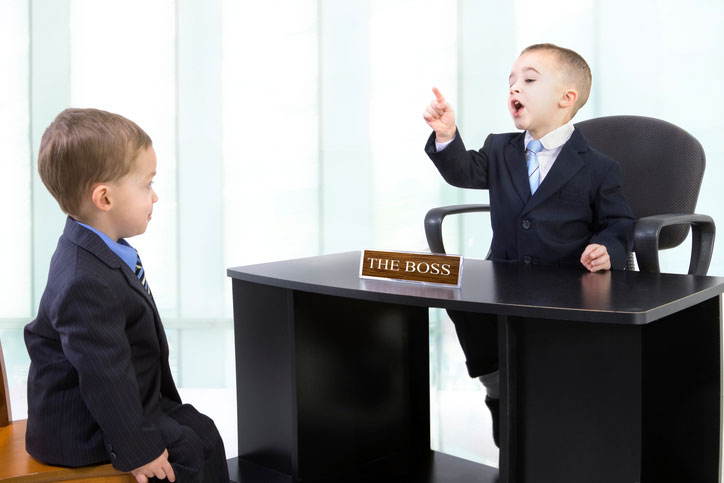The “Not-So Dreaded” End of the Year Evaluation: 3 Reasons Why Principals Should Celebrate You!
5/22/2018

How many teachers actually look forward to sitting down with their boss to review their performance?
Evaluations at the end of the year may be dreaded by some teachers. As a principal, I have been on both sides of this conversation. Let's back up, there is something wildly wrong with the way I asked that question. What if the question were asked in this manner?
How many teachers look forward to being celebrated by their lead learner at the end of the year?
I bet the responses would be drastically different! Evaluations should be a time to celebrate a year's growth in a year's time. We do that for students…why not for teachers? As educators, we celebrate a student's growth and academic achievements with wild fanfare, and why should this be different for our teachers?
As principals, we ask our teachers to find something positive to build on with even the most difficult of students. Many of us review report card comments each quarter and look for at least one positive comment about each student. Personally, I use and recommend the sandwich format with teachers in our school…start with a positive, a growth area, and end with a positive…Sandwich Style!
As a principal, I do try to balance out positives with growth areas as well. Balance does not mean a 1:1 ratio of positive to growth statements! This is different for each individual teacher and their principal, but a good rule of thumb is 7:1. As adults and depending on the relationship with the teacher, this ratio may be higher or lower. As a principal, I know which teachers may need more positives in order to make the growth statement more impactful.
Going back to the first question asked I would like to state another noticeable difference…I am not a big fan of the term "boss." In my opinion, a boss has the perception of power and control. It seems as if it is "them versus us," and respect is commanded rather than earned.
I would rather be referred to as a "lead learner." The lead learner supports everyone, students, teachers, staff, and even the community in learning! Instead of commanding respect as a boss, I prefer to earn people's respect. To get respect, you must be able give it!
As lead learner, an evaluation should be a process as well as a celebration of accomplishments. As I am personally getting better at writing and conversing with teachers, I need to be continue thinking how I can best celebrate all teacher's accomplishments. Using the Charlotte Danielson Framework, teachers are asked to take part in the evaluation process. The framework's foundation is evidence-based, asking the teacher's and principal to review items or evidence. In this fashion, many components of the framework can be agreed upon. To learn more about transitioning to an exemplary level of teaching, visit the guide, Teacher Evaluation: A Transition Guide to Exemplary Performance.
Here are three reasons why principals should celebrate teachers during the evaluation process.

1 - A Year's Growth in a Year's Time
Much like a student's academic growth over the school year, teachers who possess a growth mindset, strive to achieve goals similar to students. Teachers consciously work towards improving a component of their teaching. Using Charlotte's Danielson's Framework, choosing one or two components from the 22 she has delineated is good start. She breaks the 22 components into four domains. In the guide listed above, there are several questions in each domain and subsequent component that can be used when goal setting. Teacher goal setting should be done in unison with a principal.
- Domain One: Planning and Preparation (42 Questions)
- Domain Two: The Classroom Environment (29 Questions)
- Domain Three: Instruction (28 Questions)
- Domain Four: Professional Responsibilities (29 Questions)
Using the SMART goal process, teachers can create goals that follow this basic format:
- Specific (simple, sensible, significant).
- Measurable (meaningful, motivating).
- Achievable (agreed, attainable).
- Relevant (reasonable, realistic and resourced, results-based).
- Time bound (time-based, time limited, time/cost limited, timely, time-sensitive).
Teachers then bring items, logs, notes, etc. to the meeting with the principal. If the teacher followed the SMART goal process, a principal can review, in collaboration with the teacher, the evidence and celebrate the accomplishments for the year.
An example of celebration this year was a teacher that chose to increase parent communication. Many teachers have made this a goal, but never had a concrete plan to track their progress. This teacher had a plan that included a log. She created a goal that was specific: communicating with each parent in her classroom personally at least once a month. She developed a spreadsheet that logged the day and time she called each parent. She also included a code system for whom she talked to, as well as how the conversation went. She achieved her goal according to her spreadsheet; the goal was both relevant and time bound. We celebrated her success!

2 - "You Get What You Pay Attention To"
I know my wife may not have started this saying, but I have heard it from her so many times I am going to give her some credit of solidifying it in my brain, "You get what you pay attention to." If you pay the most attention to the negatives going in a school, you become hypersensitive to all things that are wrong with the system. The negatives seem to compound and accumulate the more we put time in discussing, identifying, and reactively trying to fix the problems. We also call this "sniffing the turd." We can admire it, talk about it, yell at it, and it is still a turd. We must go something different…go to solution!
If you pay attention and celebrate all the positives going on in a school with staff members, students, parents, and even the community, they are all inherently happier. Happiness is addictive and can be contagious. Everyone wants more of it! People look for and celebrate positives once the culture has been established. When the positives seem lacking, everyone may remember what it felt like when it was a stronger focus. Growth mindset people will then recreate many of those experiences and find a way to increase the positives.
For example, if a school focuses on establishing more rules with stricter punishments for the students' negative behaviors, a school may not get the desired results. If a school celebrates the students doing their job and the correct behaviors associated with that job, more students are going to want to be part of these positive celebrations. Intrinsic rewards tend to be more powerful than extrinsic. While an extrinsic reward system may work in the short term, developing ways to celebrate students doing the correct thing will ultimately last longer than any item or token. To learn more about a philosophy such as this, visit www.hightrust.net. The High Trust model is proven to work in many schools across the nation.

3 - Creating a Positive Culture for Collaboration of Teaming
Principals and teachers need to develop trusting relationships based on honesty, empathy, and grace. As a boss, it may be easy to tell people what they are not doing correct. You may not even care about the impact of the words you choose to use to express your opinions. With bosses like this, it is all about power and control. There is a lack of trust, honesty, and evidence-based discussions. There is probably no allowances for staff members to challenge the bosses' thinking.
Let us be honest, some principals have to evaluate numerous staff members every year and being able to express an accurate picture in all areas of evaluation is near impossible. This year I am evaluating 25 different classified and certified employees. If I acted as a boss, in my opinion, I would only rely on the knowledge that I brought to the table of each employee. I do not believe in that type of an evaluation process.
We need to create a positive culture where collaboration is not encouraged, but expected. When this philosophy is carried over to the evaluation process, staff members have a large role in their own evaluation process. Through self-assessment, reflection, and evidence-based discussions, an evaluation becomes a tool of not only improvement, but celebration, too. The principal can find components that the teacher is doing well, and build on them.
A trusting relationship is two-way street…both teachers and the principal must work on communication. When trust is established, the teacher is more able to use the constructive feedback to improve. Vice versa, a principal is more able to give grace when needed and support a teacher when asked. A collaborative team starts with putting relationships first.
A lead learner establishes strong relationships in order to improve the educational environment and school's culture. They also do not take it personal when a teacher challenges the evaluation. For example, a teacher scored lower in communication with parents. She brought out a log that showed in detail the emails, Remind app posts, texts, calls, and meetings with parents. She definitely increased her communication and met her goal. This evidence-based discussion, obviously built on trust, changed the score for her evaluation. This evaluation process empowered the teacher, as well as pushing the principal to make better-informed decisions based on evidence…a win-win for both the teacher and principal. Lastly, the principal was able to celebrate the teacher meeting her goal!
- Learning How to Say No and Set Boundaries with Parents - November 21, 2022
- If You Had Only One Behavior Strategy to Use in Your Classroom, What Would It Be? - September 26, 2022
- Live Your Code: 7 Strategies That Will Help You Be the Most Effective Educator You Can Be - August 15, 2022











